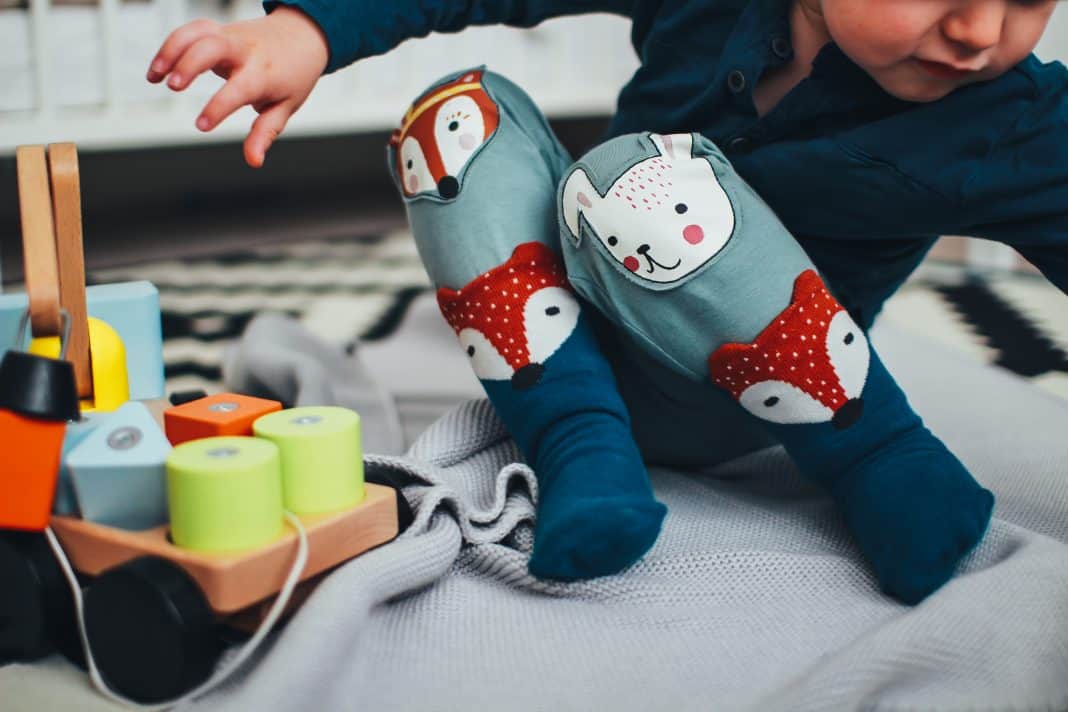There is no doubt about it; the prevalence of autism in the United States has gotten the attention of many parents. Although there are still many unanswered questions about this developmental disorder, there are a few things we know for sure.  First of all, we know that 1 out of every 68 children will fall somewhere on the autism spectrum. We also know that it is more common among boys than girls. An estimated 1 in 42 boys is believed to have autism spectrum disorder (ASD), while 1 in 189 girls are believed to have this disorder, according to Autism Speaks. Perhaps most important of all the things we know about autism is that early intervention matters.
First of all, we know that 1 out of every 68 children will fall somewhere on the autism spectrum. We also know that it is more common among boys than girls. An estimated 1 in 42 boys is believed to have autism spectrum disorder (ASD), while 1 in 189 girls are believed to have this disorder, according to Autism Speaks. Perhaps most important of all the things we know about autism is that early intervention matters.  The sooner parents can spot symptoms in their children, the sooner they can seek specialized treatment for their children. Early intervention is known to be incredibly effective in improving the symptoms of autism, says Autism Speaks. Of course, if parents want to seek early treatment, their child must be diagnosed first. For many moms and dads this will mean watching young children, even infants, for signs they may have autism.
The sooner parents can spot symptoms in their children, the sooner they can seek specialized treatment for their children. Early intervention is known to be incredibly effective in improving the symptoms of autism, says Autism Speaks. Of course, if parents want to seek early treatment, their child must be diagnosed first. For many moms and dads this will mean watching young children, even infants, for signs they may have autism.
About Early Diagnosis of Autism
Because of the nature of autism, it isn’t easy to spot in young children. This is because in some cases, children may appear to be developing typically only to regress—or lose some of their developmental skills—as they grow older.  In the same fashion, some babies will actually struggle to meet their expected developmental milestones and then suddenly catch up to what is typical for their age. Thus many doctors wait until children reach 24 months before they will make a definitive diagnosis of autism.
In the same fashion, some babies will actually struggle to meet their expected developmental milestones and then suddenly catch up to what is typical for their age. Thus many doctors wait until children reach 24 months before they will make a definitive diagnosis of autism.  This doesn’t mean that infants cannot be screened for developmental delays, however. According to Autism Speaks, some symptoms of autism can be detected as young as 6 months of age, and this advocacy organization encourages parents to be on the lookout for any troubling symptoms in their children. Here are some tips on how to spot autism in your infant, starting when they are 3 months old.
This doesn’t mean that infants cannot be screened for developmental delays, however. According to Autism Speaks, some symptoms of autism can be detected as young as 6 months of age, and this advocacy organization encourages parents to be on the lookout for any troubling symptoms in their children. Here are some tips on how to spot autism in your infant, starting when they are 3 months old.
The Earliest Signs of Autism in Your Baby
Diagnosis of autism by the time a child is 3 months of age is unheard of, but pediatricians are still keeping an eye out for potentially alarming delays in newborns that may point to an underlying issue.  At 3 months of age, most typically developing children will have started to smile, according to the Autism Society. They will also begin to notice and look at faces, especially the faces of those they care about the most. When presented with a moving object, 3-month-olds should be able to follow that object by moving their gaze or shifting their head.
At 3 months of age, most typically developing children will have started to smile, according to the Autism Society. They will also begin to notice and look at faces, especially the faces of those they care about the most. When presented with a moving object, 3-month-olds should be able to follow that object by moving their gaze or shifting their head.  Some motor delays could also point to ASD in babies, such as being unable to lift their head or bring their hand to their mouth, according to the Autism Society.
Some motor delays could also point to ASD in babies, such as being unable to lift their head or bring their hand to their mouth, according to the Autism Society.
Signs in the First Six Months of Life
By the time your baby is 6 months old, they should be able to engage in some basic social interactions with the people who are caring for them most frequently.  Absence of these interactions is one of the chief signs of autism during the first six months of a baby’s life. If your child isn’t smiling at you or showing expressions of enjoyment by this age, this might be a clue that your baby may have some developmental delays, according to Helpguide.org. There is also some evidence that very young babies who do not seem interested in the faces of others are at a higher risk for autism. One study, performed by researchers at Yale, observed the amount of time infants spent looking at images of faces.
Absence of these interactions is one of the chief signs of autism during the first six months of a baby’s life. If your child isn’t smiling at you or showing expressions of enjoyment by this age, this might be a clue that your baby may have some developmental delays, according to Helpguide.org. There is also some evidence that very young babies who do not seem interested in the faces of others are at a higher risk for autism. One study, performed by researchers at Yale, observed the amount of time infants spent looking at images of faces.  More than two years later, researchers followed up with this same group of infants and found that those who went on to be diagnosed with autism were more likely to belong to the group of infants who spent less time looking at faces.
More than two years later, researchers followed up with this same group of infants and found that those who went on to be diagnosed with autism were more likely to belong to the group of infants who spent less time looking at faces.
Signs You Can Spot Before a Baby Is 9 Months Old
As your baby grows older, there are new milestones they should be reaching. Failure to reach these milestones can be cause for concern, even if it doesn’t guarantee a diagnosis of autism. In addition to smiling in response to being smiled at, there are other reciprocal behaviors you should expect to see in your child.  At 9 months old, typically developing babies will engage in exchanging noises back and forth. They will also show some kind of response to the facial expressions of others. In general, by the time your baby is 9 months old, you should hope to see the very beginnings of social behaviors emerging.
At 9 months old, typically developing babies will engage in exchanging noises back and forth. They will also show some kind of response to the facial expressions of others. In general, by the time your baby is 9 months old, you should hope to see the very beginnings of social behaviors emerging.
Signs That May Show Up Before Your Baby’s First Birthday
When your baby reaches their first birthday, there’s cause for celebration. Of course, along with this milestone comes a visit with their pediatrician to review a whole list of milestones they should be reaching.  For 1-year-olds, there are some bare-minimum developmental achievements they should have knocked out of the park. Babies this age should respond in some way when you say their name, even if it is just a glance in your direction. Your baby should also be talking some, even if they aren’t real words. Parents of typically developing children will have noticed babbling and baby talk by their first birthday. Lastly, at this point your baby should be have picked up on some non-verbal actions such as waving, pointing, or reaching when they want to be held.
For 1-year-olds, there are some bare-minimum developmental achievements they should have knocked out of the park. Babies this age should respond in some way when you say their name, even if it is just a glance in your direction. Your baby should also be talking some, even if they aren’t real words. Parents of typically developing children will have noticed babbling and baby talk by their first birthday. Lastly, at this point your baby should be have picked up on some non-verbal actions such as waving, pointing, or reaching when they want to be held.  Watching your child play is another way you can keep an eye out for the development of autism. By the time they are about a year old, your baby will begin to engage in very purposeful play. They will start to use objects as they are meant to be used, according to the Autism Society, which says that pretending to talk on the phone or knowing to drink out of a glass are developmentally appropriate behaviors at this age.
Watching your child play is another way you can keep an eye out for the development of autism. By the time they are about a year old, your baby will begin to engage in very purposeful play. They will start to use objects as they are meant to be used, according to the Autism Society, which says that pretending to talk on the phone or knowing to drink out of a glass are developmentally appropriate behaviors at this age.  As your child approaches their first birthday, you can also watch out for the presence of alarming behaviors, instead of just watching for the absence of developmentally appropriate behaviors. Repetitive behaviors in young children can be a sign of autism. If your child is engaging in self-stimulatory behavior such as rocking, hitting themselves, or twirling, this could be a clue they are struggling with their development.
As your child approaches their first birthday, you can also watch out for the presence of alarming behaviors, instead of just watching for the absence of developmentally appropriate behaviors. Repetitive behaviors in young children can be a sign of autism. If your child is engaging in self-stimulatory behavior such as rocking, hitting themselves, or twirling, this could be a clue they are struggling with their development.
Here’s what to do if you are concerned about your infant’s development.
If you notice your child is showing signs of developmental delays, it is understandable that you may be concerned. Your first step should always be a visit with your child’s pediatrician. They have received extensive training on spotting the earliest symptoms of autism in children.  A visit with your child’s doctor will usually go one of two ways. You may be told that your child’s delays are still within the realm of normal, since all kids develop at different paces. At your visit your child’s doctors may instead conclude that the symptoms being displayed are reason for concern and then they will recommend next steps, like seeing a specialist or having your child formally evaluated for autism.
A visit with your child’s doctor will usually go one of two ways. You may be told that your child’s delays are still within the realm of normal, since all kids develop at different paces. At your visit your child’s doctors may instead conclude that the symptoms being displayed are reason for concern and then they will recommend next steps, like seeing a specialist or having your child formally evaluated for autism.  No matter what you learn, your doctor, other healthcare providers, and parenting support groups will help you figure out next steps for how to best support your child.
No matter what you learn, your doctor, other healthcare providers, and parenting support groups will help you figure out next steps for how to best support your child.



